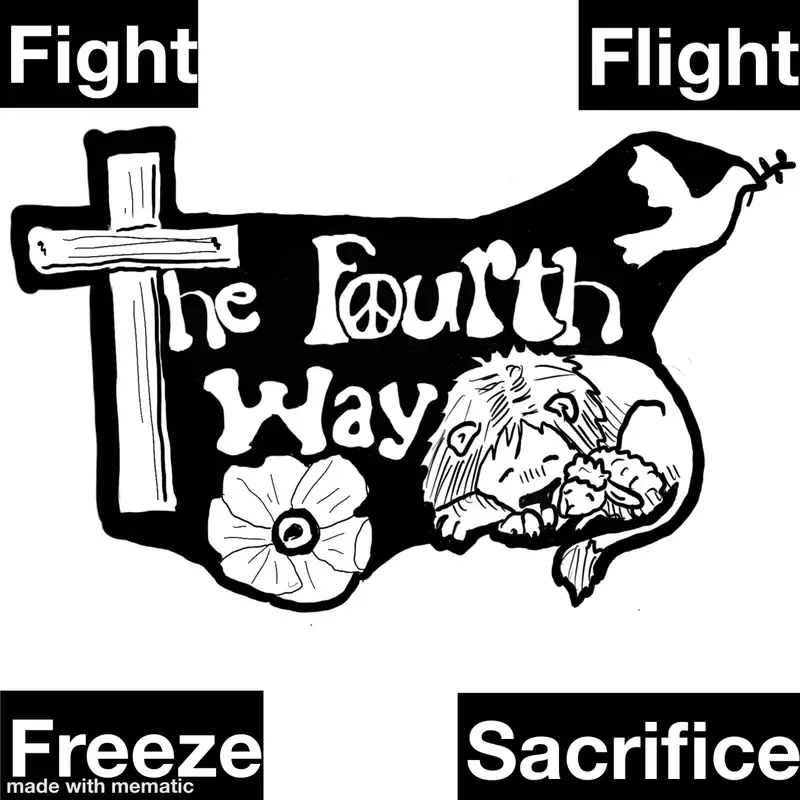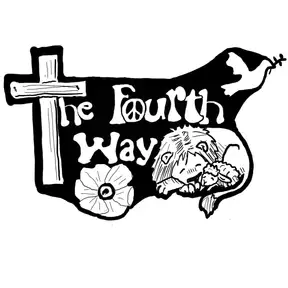(117) S7E14 Nonviolent Action: The Baltic Way
Welcome back to The Fourth Way podcast. Today, we are continuing our series on nonviolence by looking at nonviolent action from the Cold War. And this particular action today is called the Baltic Way. As far as nonviolent actions go, this one isn't really powerful in the sense that it was responsible for toppling any huge governments. It's really hard to know how much impact this particular action actually had, but I'm including it for a couple reasons.
Derek:First, the logistics and scale of this action are just amazing. The fact that a feat like this was ever done, let alone in communist controlled Eastern Europe is amazing. Second oh, and before GPS, mind you. Now second, I had to include an action from the Cold War, I just felt kind of strange not to have one. I know I've I've mentioned Sultanizen and Havel and that kind of stuff, but I felt like we needed some significant action.
Derek:So it just would have felt incomplete if I didn't have something from the Cold War. Finally, I think the Baltic Way shows the importance of momentum and how even acts which might not directly cause regime change help to create a cumulative pressure that other movements that might have more substantive goals behind them might be able to capitalize on. So let's dive in. The Baltic Way is a really simple non violent action in the sense that, you know, there aren't tons and tons of moving parts like there are with some of these other things. The Baltic countries of Estonia, Lithuania, and Latvia got together to form a massive demonstration.
Derek:And when I say massive, know, you think these countries are pretty small compared to a lot of the other countries we've talked about, but the demonstration consisted of 2,000,000 people, and they made a chain of 600 kilometers long that was unbroken, an unbroken human chain of 2,000,000 people spanning 600 kilometers. And the demonstration was intended to counter Moscow's narrative about the Baltic States which was that, oh, they're only a fringe group of citizens who want independence, know, everybody really actually likes our government. And that just wasn't true, and the Baltic States wanted to demonstrate that by having 2,000,000 people come out. The demonstration worked, it got the often overlooked Baltic States into the headlines. Now there are a few important things to note from this, this action.
Derek:First of all, the Baltic Way preceded the fall of the Berlin Wall, so the Cold War wasn't in the bag at this point. It took a lot of guts to make this this move because, the fall of communism wasn't sure at this point. However, other countries, especially Poland, had done a lot more of the deeper non violent work up to this point. There were a number of other non violent actions which had taken place over the decades which were crushed pretty severely, and then in Poland, they had actually gained some ground with some of their nonviolent actions. So if you're gonna look at nonviolence that was sort of accomplishing things and kind of paving the way, you'd want to take a look at Poland if you're studying non violence during the Cold War.
Derek:But we're taking a route less traveled since this is just a little bit unique and different. So, Poland was actually really important for creating the momentum that was able to let the Baltic States feel that they as smaller countries were going to be able to do something to speak back to power. Because as Poland and some other Eastern European countries advanced the cause of freedom, especially as larger countries, courage in the region was able to grow and spread. This highlights not only the importance of taking advantage of momentum, but once again explains why Sultanizen and Havel were so profound on their identification of small truths as being invaluable to revolution. As the mask, the facade of power and violence is peeled back from a tyrannical state, it helps others to see the truth and to muster the courage to act against the state.
Derek:Chipping away at the facade and persisting in truth telling is vital to non violently addressing dictatorial states. So, like I said, I understand that this isn't the most complex or influential act, and maybe it's just me, but when I first learned about the Baltic Way, it was one of the most jaw dropping movements because it was so visual, this huge human chain. And that's probably because I saw pictures of it when I was first introduced to it. So, with all the time you saved listening to a much longer podcast that I usually have, take this extra time, go search the Baltic Way, I've linked some videos and documentaries and things in the show notes, but just go watch about it. It's a pretty short read and short watch but just seeing some of these images and videos and hearing some of the stories, it's just beautiful.
Derek:I think it's one of the movements that is beautiful. You don't have people getting killed and all of that stuff. It's just, I don't know, there's something beautiful about it. So, go check it out and I think you'll enjoy it. Anyway, that's all for now.
Derek:So peace and because I'm a pacifist, when I say it, I mean it.

